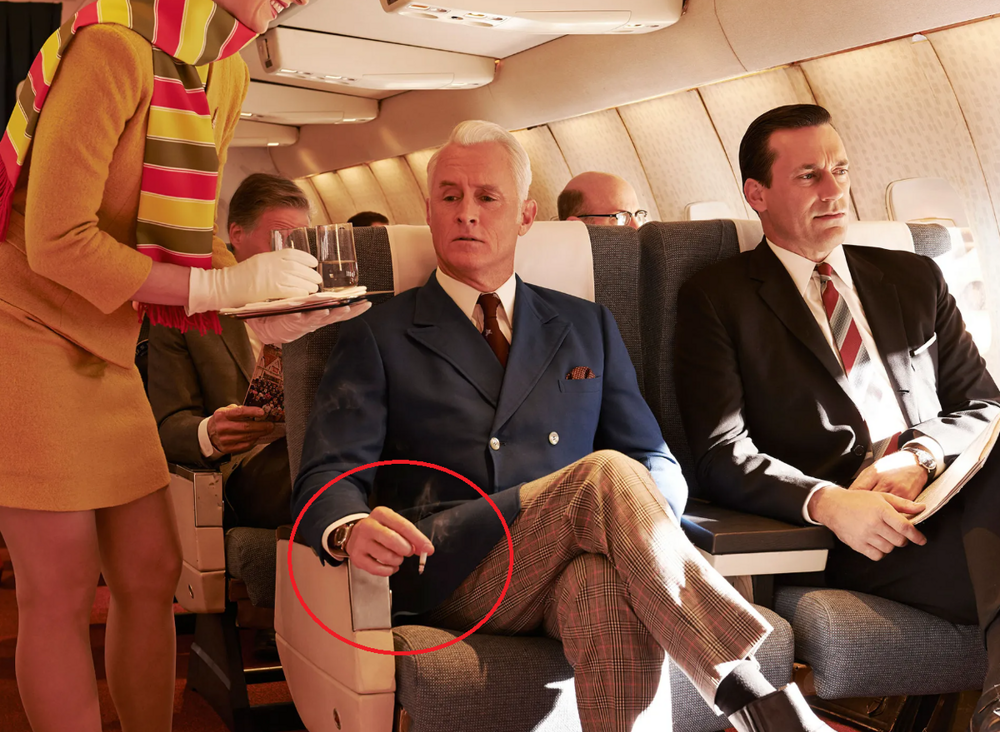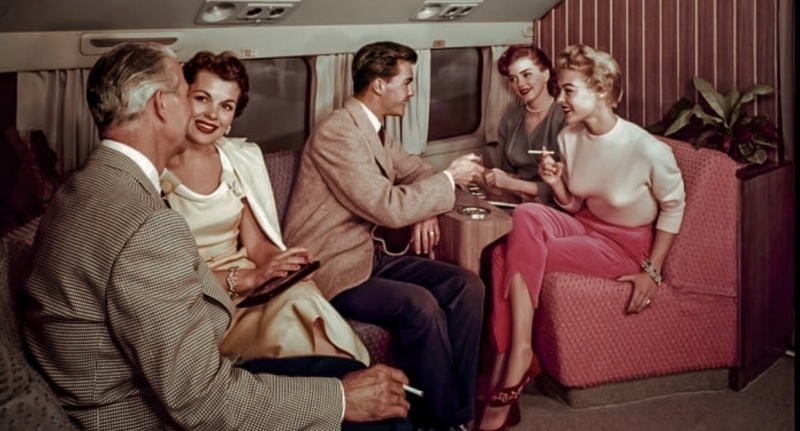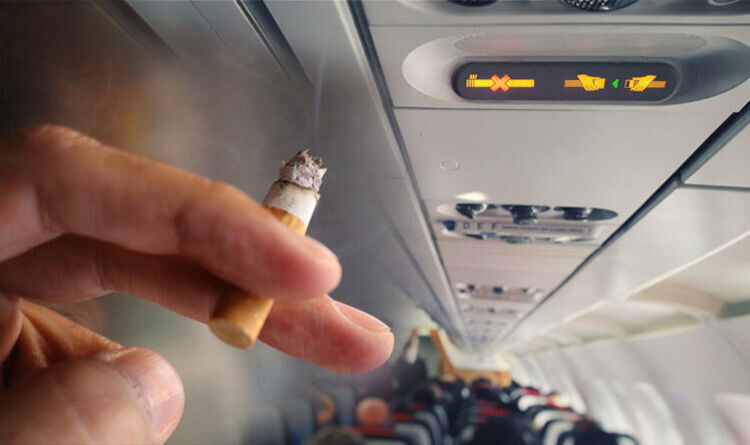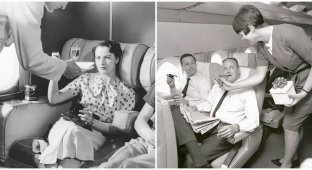Why did everyone used to smoke cigarettes freely on airplanes, and then it became prohibited? (5 photos)
If you have watched the television series Mad Men, you have probably noticed that during flights the main characters constantly smoke on the plane. And no, this is not some kind of fantasy. In the second half of the 20th century, smoking on airplanes was one of the main services for true gentlemen at all major airlines. 
But over the past few decades, there have been significant changes in the world's attitudes towards smoking, leading to the introduction of a complete ban on smoking on board aircraft.
Why did this happen?
A brief excursion into history 
Still from the television series "Mad Men"
It's hard to imagine now, but in the 1950s, during the era of luxury air travel, some airlines provided free cigarettes in-flight, sold them on board, built ashtrays into seat armrests, and even offered separate smoking areas (usually in the rear of the planes). , performing the longest and most prestigious routes.
Free cigars were given out to United Air Lines passengers on special gentlemen's-only flights called the New York Executive. Such flights were invented for men who were tired of listening to constant complaints about smoke from women and old people. After all, many people were simply uncomfortable constantly smelling cigarettes on board. 
Therefore, United Air Lines flights invited their passengers to relax, take off their shoes, jackets and ties, get free cigars and enjoy a comfortable flight, free from annoying passengers and women.
The first talk about banning smoking on airplanes began in the late 1960s. 
In 1969, American consumer advocate Ralph Nader petitioned the Department of Transportation demanding a complete ban on smoking on airplanes. One of the reasons was the increase in catering on board and some passengers felt that their meals were marred by terrible cigarette smoke. Also in the late 60s, doctors began to warn their patients about the dangers of smoking.
In addition, it was mentioned that smoking on board can pose a serious fire hazard. Dry air in an airplane cabin can also make fuel more flammable. In an emergency situation, fighting a fire on board can be extremely difficult and potentially compromise the safety of all passengers and cabin crew.
In 1969, the first bills calling for a ban on smoking on board were also introduced into the US Congress. However, they did not pass because at that time the tobacco lobby was very strong, and many smokers were against such bans, arguing that it would force respectable people to look for other forms of travel. And the key clientele of airlines in those years were middle-class men over 35 and above, most of whom were smokers.
But you would never guess that one of the main reasons for banning smoking on board was due to simple savings 
Have you ever wondered how air is maintained in a hermetically sealed airplane? The air in the aircraft cabin is recirculated by mixing outside air with cabin air. The mixture is then cooled using turbo coolers and fed back into the cabin through a mixer.
In the past, when smoking was allowed on airplanes, air had to be recirculated more frequently, increasing airline maintenance and fuel costs. But even if we assume that the economic benefit of selling cigarettes on a single flight can be large (compared to the cost of fuel and maintenance of cabin air filters), imagine the costs that might be incurred by an airline flying hundreds or even tens of thousands of flights a year . No amount of cigarette sales on board covered the costs of servicing dozens and hundreds of airliners, which were increasing every year.
By the 1990s, flying had ceased to be a mode of transportation for the middle class and above, and many ordinary people could afford a plane ticket. Airlines began to actively expand their fleets and the number of flights due to many hundreds of thousands of new customers. Also at this time, people more actively complained about the harm caused by smokers on airplanes, especially harmful to the health of small children whom their parents took with them.
All this led to the fact that already in 1996 the federal government banned smoking on all flights to and from the United States, and in 1997 the European Union banned smoking on flights of all member countries. In some other countries, the situation took a little longer: for example, China did not ban smoking on airplanes until 2017.
The smoking ban on board helped maintain healthy air quality for all passengers. Cigarette smoke affects the aircraft's ventilation system and makes the air in the cabin unsterile (clean). In addition, aircraft cabin air filters did not need to be changed as often as before the smoking ban.























